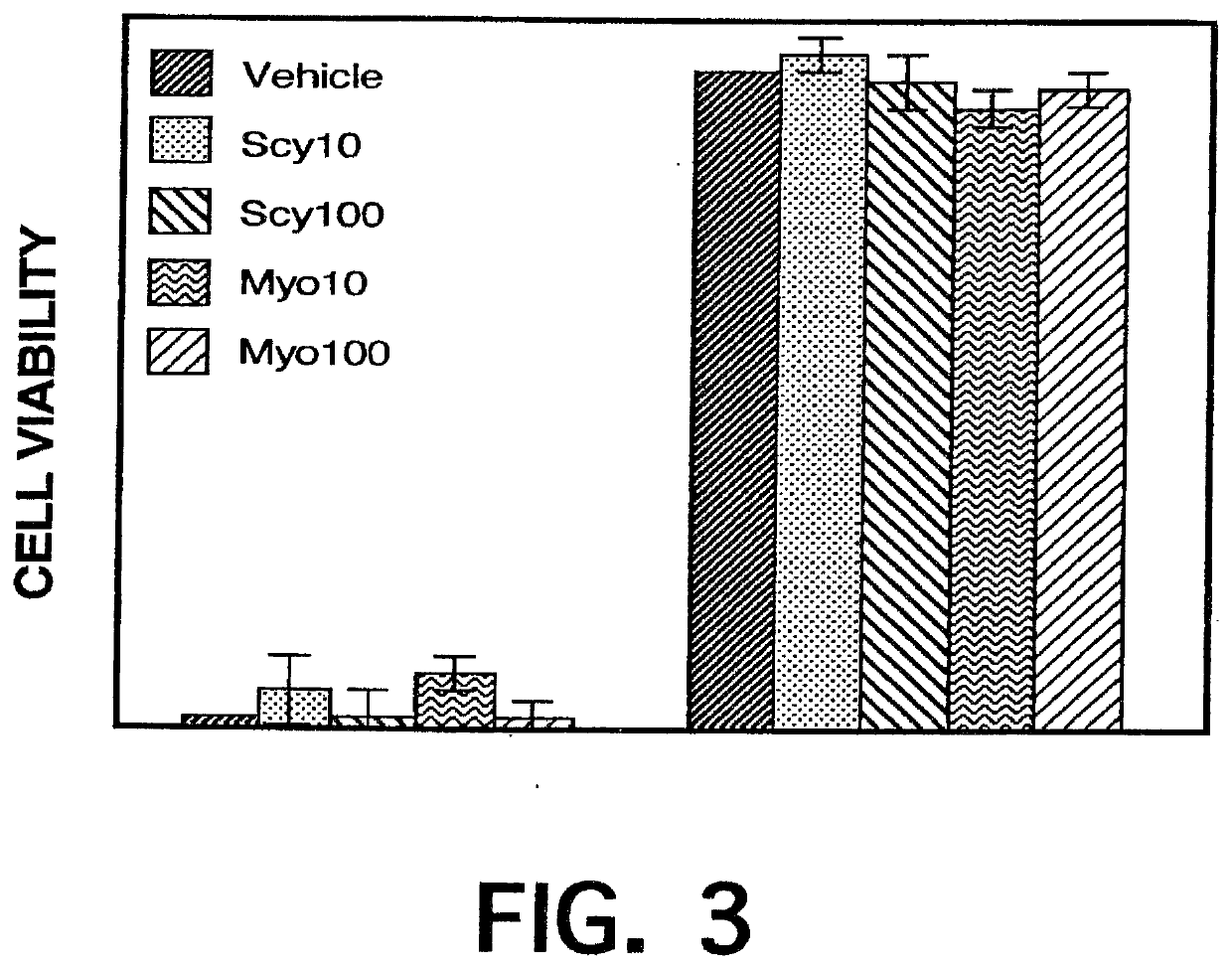Prophylactic and therapeutic treatment of alzheimer's disease using phytic acid and phytate to reduce amyloid beta plaque and tau protein
a technology of amyloid beta plaque and tau protein, applied in the field of phytic acid and phytate for the treatment of alzheimer's disease, can solve problems such as burdensome doses, and achieve the effect of preventing the occurrence of potential side effects, treating and preventing the aggregation of beta amyloid proteins
- Summary
- Abstract
- Description
- Claims
- Application Information
AI Technical Summary
Benefits of technology
Problems solved by technology
Method used
Image
Examples
examples
[0039]The Applicant tested compounds disclosed in the above referenced patents of Sabin using well established standard routine testing, as known in the art, at Oregon Science and Health University in an in-vitro challenge test.
[0040]The Applicant submits two pages of the data of these in vitro tests. in the first test, phytic acid attenuates APP CTF-induced neurotoxicity. APP is a precursor / source to beta amyloid plaque and is considered by many to be a “bad actor”, “cause”, of Alzheimer's Disease. See DDN BENCH PRESS. Neither scyllo inositol nor myo inositol previously used by Barak et al, “inositol treatment of Alzheimer's disease: a double blind, cross-over placebo controlled trial”, Prog. Neuro-Psychopharmacol. & Biol. Psychiatry., 20(4): 729-735, 1996 attenuated APP CTF-induced neurotoxicity. Phytic acid is shown to be active, while scyllo inositol and myo inositol are shown to he inactive. These surprising and unexpected results with phytic acid attenuating APP CTF-induced ne...
PUM
 Login to View More
Login to View More Abstract
Description
Claims
Application Information
 Login to View More
Login to View More - R&D
- Intellectual Property
- Life Sciences
- Materials
- Tech Scout
- Unparalleled Data Quality
- Higher Quality Content
- 60% Fewer Hallucinations
Browse by: Latest US Patents, China's latest patents, Technical Efficacy Thesaurus, Application Domain, Technology Topic, Popular Technical Reports.
© 2025 PatSnap. All rights reserved.Legal|Privacy policy|Modern Slavery Act Transparency Statement|Sitemap|About US| Contact US: help@patsnap.com



